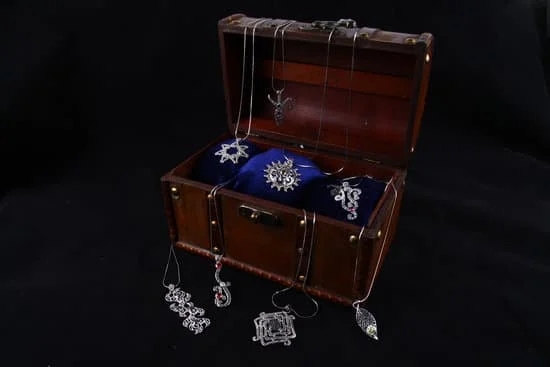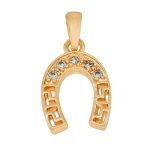Wire weaving has been a cherished technique in jewelry-making for centuries, allowing artisans to create intricate and captivating designs. This article delves into the rich history of wire weaving in jewelry, tracing its origins back to ancient times and examining its enduring influence on contemporary design. From the mesmerizing technique itself to the symbolism behind wire weave patterns, this introductory section provides a glimpse into the fascinating world of wire weaving.
The art of wire weaving can be traced back to ancient civilizations such as Egypt and Greece, where it was used to create elaborate adornments for both men and women. These early examples showcase the skill and craftsmanship that went into wire weaving, with intricate patterns and delicate details that still captivate us today. As time progressed, wire weaving techniques spread throughout different cultures, adapting and evolving to fit their artistic aesthetics.
One of the mesmerizing aspects of wire weaving is the intricacy involved in creating these designs. Artists must carefully manipulate each piece of wire, twisting and interlocking them together to form elaborate patterns. The result is a unique texture that gives jewelry an elegant and timeless appeal. Wire weavers develop their techniques over years of practice, mastering the art of creating stunning pieces through patience, precision, and creativity.
In addition to its technical prowess, wire weaving also carries deep symbolism that adds another layer of meaning to jewelry. Different weave patterns can represent various concepts such as protection, love, or unity. Many cultures have incorporated specific symbols within their wire weave designs that hold cultural significance or reflect important beliefs. Understanding these meanings can deepen our appreciation for the craft and provide insight into the stories being told through each piece.
Overall, wire weaving stands as a testament to the enduring beauty and craftsmanship found in jewelry-making throughout history. Its rich heritage continues to inspire contemporary artists who push boundaries in technique while paying homage to tradition. In the sections that follow, we will explore this timeless craft further by uncovering its ancient origins, delving into the intricacies of the technique, and examining the symbolism behind wire weave patterns.
Ancient Origins
The art of wire weaving in jewelry has a rich and fascinating history that dates back to ancient times. Tracing the beginnings of wire weaving reveals the early techniques and materials used by ancient civilizations to create stunning pieces of wearable art.
Ancient Origins:
Wire weaving in jewelry can be traced back to several ancient cultures, including the Egyptian, Greek, and Celtic civilizations. These cultures often used simple tools such as wooden dowels and small anvils to shape and manipulate metals into intricate patterns. The earliest known examples of wire weaving in jewelry date back over 5,000 years to Ancient Egypt. Gold wires were woven together to create delicate earrings, necklaces, and bracelets adorned with colorful gemstones.
The Mesmerizing Technique:
Wire weaving involves manipulating thin metal wires into different patterns using various techniques such as looping, twisting, and braiding. The skill required to create these intricate designs is a testament to the craftsmanship of ancient jewelers. The process often involves starting with a basic structure or frame made from thicker wires and then weaving thinner wires through them to form decorative patterns or basket-like structures.
Symbolism and Significance:
In addition to their aesthetic appeal, wire weave patterns in ancient jewelry often held symbolic meanings. For example, certain patterns were believed to bring luck, protection, or love to the wearer. Many cultures also incorporated specific symbols or motifs into their wire weaving designs that represented gods, nature elements, or important events.
As we delve into the ancient origins of wire weaving in jewelry making, it becomes clear that this technique has deep cultural significance and has evolved over time into the mesmerizing craft it is today.
| Ancient Cultures | Examples |
|---|---|
| Egyptian Civilization | Gold wires woven into earrings, necklaces, and bracelets |
| Greek Civilization | Wire weaving techniques used to create intricate jewelry pieces |
| Celtic Civilization | Use of wire weaving to craft ornate jewelry with symbolic meanings |
The Mesmerizing Technique
Wire weaving is a mesmerizing technique that adds intricate designs and patterns to jewelry. This ancient art form involves manipulating, twisting, and interweaving thin wires to create stunning pieces of wearable art. The skill required to master wire weaving is immense, as it requires precision and attention to detail.
One of the key aspects of wire weaving is the use of different weaving patterns. There are various techniques that can be employed, such as the classic weave, diamond weave, twisted weave, and many more. Each pattern creates a unique texture and visual interest in the piece. Wire weavers often experiment with different patterns and combinations to achieve the desired effect.
To create wire woven jewelry, jewelers use various tools such as pliers, mandrels, and hammers. Pliers are essential for bending and shaping the wires, while mandrels help in creating consistent curves and shapes. Hammers are used for flattening the wires or adding texture to them. Wire weavers also use gemstones or beads to enhance their designs, incorporating them into their woven structures.
The process of wire weaving can be time-consuming due to its intricate nature. It requires patience and practice to achieve mastery in this technique. Wire weaving artists spend hours meticulously working on each piece, ensuring every loop and twist is perfect. The end result is a beautifully crafted piece of jewelry that showcases both the artist’s skill and the timeless beauty of wire weaving.
Symbolism and Significance
Wire weaving is not only a technique used to create intricate designs in jewelry, but it also holds significant symbolic meaning. The patterns created through wire weaving can convey various meanings and emotions, making them an important element in jewelry design. Understanding the symbolism and significance behind wire weave patterns can deepen our appreciation for this ancient craft.
One common symbol found in wire weave patterns is the infinity symbol. The continuous loops and interweaving wires create a sense of eternity and endlessness. This symbolizes never-ending love, connection, or life itself. Jewelry adorned with infinity wire weave patterns can be a meaningful gift to represent an everlasting bond or commitment.
Another symbol that frequently appears in wire weave patterns is the tree of life. This powerful symbol is often represented by a central trunk with branches reaching outwards and roots deep into the ground. It represents the interconnectedness of all living beings, as well as the cycles of life and growth. The tree of life wire weave pattern can be worn as a reminder to stay connected with nature and embrace personal growth.
The use of specific gemstones or colors in wire weave patterns can also add additional layers of meaning. For example, using red gemstones or incorporating red wire in the pattern can symbolize passion, energy, or vitality. On the other hand, using blue gemstones or blue wire can represent calmness, harmony, and peace.
Understanding these symbolic meanings behind wire weave patterns allows jewelry designers to create pieces that go beyond mere aesthetics. It enables them to tell stories and evoke emotions through their creations. Whether it’s an expression of love, a celebration of life, or a reminder of personal values, wire woven jewelry holds deeper significance beyond its visual appeal.
| Symbol | Meaning |
|---|---|
| Infinity Symbol | Never-ending love, connection, or life itself |
| Tree of Life | Interconnectedness, cycles of life and growth |
| Red Color/Symbol | Passion, energy, vitality |
| Blue Color/Symbol | Calmness, harmony, peace |
Renaissance and Rebirth
During the Renaissance period, wire weaving experienced a resurgence in jewelry design. This was a time of great innovation and creativity across various art forms, and jewelry was no exception. After centuries of being overshadowed by other techniques such as casting and filigree work, wire weaving emerged once again as a popular method of creating intricate and unique pieces.
The renewed interest in wire weaving during the Renaissance can be attributed to several factors. One of the main reasons was the rediscovery and appreciation of ancient techniques and designs from classical antiquity. Artists and craftsmen were inspired by the elaborate wire work found in ancient jewelry, such as the delicate gold wires woven into intricate patterns in Etruscan jewelry.
Another contributing factor to the resurgence of wire weaving was the increased availability of precious metals such as gold and silver. As trade routes expanded during this period, access to exotic materials became more widespread. This allowed jewelers to experiment with different techniques, including wire weaving, which required a substantial amount of metal.
Wire weaving during this era was characterized by its intricate patterns and delicate filigree work. Jewelers would twist, bend, and weave thin wires together to create elaborate designs that resembled lace or embroidery. These pieces were highly prized for their craftsmanship and attention to detail.
The revival of wire weaving during the Renaissance not only added a new dimension to jewelry design but also paved the way for future innovations in the craft. The techniques developed during this time would continue to influence jeweler’s work for centuries to come, making wire weaving an enduring part of jewelry-making history.
Wire Weaving Masters
Introduction to Wire Weaving Masters
Throughout the history of wire weaving in jewelry, there have been numerous artists who have mastered this intricate technique and left a lasting impact on the craft. Their innovative designs, technical skill, and artistic vision have cemented their place as influential figures in the world of wire weaving. In this section, we will highlight a few of these remarkable individuals who have contributed significantly to the development and popularity of wire weaving in jewelry-making.
The Pioneers of Wire Weaving
Among the early pioneers of wire weaving in jewelry was Elizabeth Bone. Born in the late 17th century, Bone’s exceptional craftsmanship and creativity made her one of the most notable wire weavers of her time. Her intricate patterns and meticulous attention to detail set a high standard for future generations.
Another noteworthy figure is Augustin Acton, an artist from the early 19th century who pushed boundaries with his experimental approach to wire weaving. Acton’s bold use of unconventional materials such as feathers and gemstones created a unique aesthetic that continues to inspire contemporary artists today.
Evolutionary Artists: Exploring Modern Wire Weaving Innovators
In more recent times, modern wire weavers like Harold O’Connor and Jinks McGrath have made significant contributions to the art form. O’Connor, known for his mastery of complex weaving patterns, elevated wire weaving from traditional craft to fine art. His ability to create sculptural pieces using precious metals earned him international acclaim.
Jinks McGrath is another prominent figure whose artistic vision has revolutionized wire weaving in jewelry design. Combining traditional techniques with contemporary elements, McGrath’s creations embody innovation and elegance.
Contemporary Innovations
In the world of jewelry design, the art of wire weaving has evolved and adapted over centuries. As with any artistic craft, innovation is key to keeping the tradition alive and relevant in modern times. Contemporary jewelry artists have continued to push the boundaries of wire weaving techniques, exploring new possibilities and creating unique pieces that showcase their creativity and expertise.
Exploring New Materials
One way in which contemporary artists have innovated in wire weaving is through the exploration of new materials. Traditionally, wire weaving was primarily done using metals such as gold, silver, or copper.
However, modern artists have experimented with a wide range of materials including precious gemstones, beads, crystals, and even non-traditional materials like polymer clay or fabric. These alternative materials add texture, color, and dimension to wire woven pieces, creating stunning visual effects and pushing the boundaries of traditional wire work.
Fusion of Techniques
Another innovative approach taken by contemporary jewelry artists is the fusion of different techniques. Wire weaving has been combined with other jewelry-making methods such as beadwork, chainmaille, or metalworking to create truly unique designs. By combining these techniques, artists are able to achieve intricate patterns and textures that are not possible through a single method alone. This fusion allows for greater versatility and creative expression in wire woven jewelry.
Experimentation with Forms
Contemporary artists are also pushing boundaries by experimenting with different forms and structures within wire weaving. While traditional wire weaving often focused on flat designs such as pendants or earrings, modern artists have explored three-dimensional designs including sculptural forms like bracelets or necklaces that wrap around the body. This experimentation with form adds depth and complexity to wire woven pieces, transforming them into wearable works of art.
Wire Weaving Across Cultures
Wire weaving is a jewelry technique that has been found in various cultures across the globe. As this craft has traveled through time and geographical boundaries, it has evolved and adapted to suit different cultural aesthetics. From ancient civilizations to contemporary societies, wire weaving has been embraced and personalized by artisans all over the world.
One notable example of wire weaving across cultures can be found in ancient Egypt. Egyptian jewelry, known for its opulence and intricacy, often featured wire woven designs. Gold wires were meticulously woven together to create elaborate patterns, such as the popular spirals and rosettes. These pieces not only served as adornments but also had symbolic meanings associated with deities and spiritual beliefs.
In Celtic culture, wire weaving was prevalent in their jewelry designs. The Celts used intricate knotwork patterns created through wire weaving techniques to create stunning pieces such as torcs, brooches, and pendants. These knots embodied deep symbolism representing interconnectedness, eternity, and protection.
Moving towards Asia, India boasts a rich tradition of wire weaving in jewelry making. One traditional Indian technique is “filigree,” which involves shaping thin wires into delicate patterns and soldering them onto metal surfaces to form intricate motifs. This centuries-old art form can be seen in elaborate earrings, necklaces, and other accessories worn during special occasions like weddings.
These are just a few examples that demonstrate how wire weaving has been adapted by different cultures around the world. Each culture brings its unique artistic style, materials, and symbols to this timeless craft of jewelry-making. Exploring these varied cultural adaptations allows us to appreciate the diversity and beauty of wire weaving as a global art form.
Going Beyond
Wire weaving is a versatile technique that has expanded beyond traditional jewelry-making and found innovative applications in various artistic realms. While wire weaving is traditionally associated with creating intricate patterns and designs in jewelry, artists have begun exploring alternative ways to incorporate this stunning craft into their work.
One alternative application of wire weaving in jewelry-making is the creation of statement pieces. Artists are using wire weaving techniques to craft bold and eye-catching designs that make a powerful fashion statement. By combining different types of wires, incorporating gemstones or beads, and experimenting with different weaving patterns, artists are able to create unique and striking pieces that stand out from the crowd.
In addition to statement jewelry, wire weaving has also made its way into other art forms such as sculpture. Artists are utilizing wire weaving to bring three-dimensional sculptures to life. By manipulating wires into intricate patterns and structures, these artists are able to create visually stunning sculptures that captivate viewers with their complexity and craftsmanship.
Another interesting application of wire weaving in jewelry-making is in the creation of home decor items. From wall hangings to candle holders, artists have found ways to incorporate wire weaving techniques into functional and beautiful pieces for the home. The delicate patterns created by wire weaving add an elegant touch to these items, making them both visually appealing and unique.
As wire weaving continues to evolve as an art form, we can expect even more exciting alternative applications in the future. From wearable art to functional decor, this ancient technique has proven its adaptability and ability to transcend traditional boundaries. Its enduring beauty and versatility ensure that wire weaving will continue to captivate artists and enthusiasts alike for years to come.
Conclusion
In conclusion, the history of wire weaving in jewelry reveals a timeless craft that has captivated artisans and wearers alike for centuries. From its ancient origins to its contemporary innovations, wire weaving has proven to be a mesmerizing technique that continues to push boundaries and adapt to different cultures. Its enduring beauty lies not only in its intricate patterns and symbolism but also in its versatility and the alternative applications it offers.
Throughout history, wire weaving in jewelry has served as a form of artistic expression, with each pattern telling a unique story. The symbolism and significance behind these patterns add depth and meaning to the wearer’s experience. Whether it is a Celtic knot symbolizing infinity or an intricate floral design representing growth and rebirth, wire weave patterns resonate with individuals on a personal level.
The Renaissance period witnessed a revival of wire weaving in jewelry design, sparking renewed interest and appreciation for this delicate craft. Since then, wire weaving has evolved with innovative techniques that push boundaries and challenge traditional notions of what is possible. Today, contemporary artists continue to experiment with new materials and methods, resulting in breathtaking creations that blur the lines between art, fashion, and adornment.
Furthermore, wire weaving transcends cultural boundaries, adapting to different traditions and aesthetics around the world. From African tribal regalia to Indian filigree work, every culture puts its own unique twist on this versatile technique. This cultural adaptation adds richness and diversity to the craft of wire weaving, allowing for endless possibilities of creativity.
In conclusion, the beauty of wire weaving in jewelry lies not only in its intricate patterns but also in its ability to capture the imagination throughout history. Its enduring appeal has allowed for countless innovations as well as cross-cultural adaptations. As we celebrate the rich history of wire weaving in jewelry-making today, we can appreciate the timeless allure it holds as an art form that speaks volumes about our shared human experience.

Welcome to my jewelry blog! My name is Sarah and I am the owner of this blog.
I love making jewelry and sharing my creations with others.
So whether you’re someone who loves wearing jewelry yourself or simply enjoys learning about it, be sure to check out my blog for insightful posts on everything related to this exciting topic!





